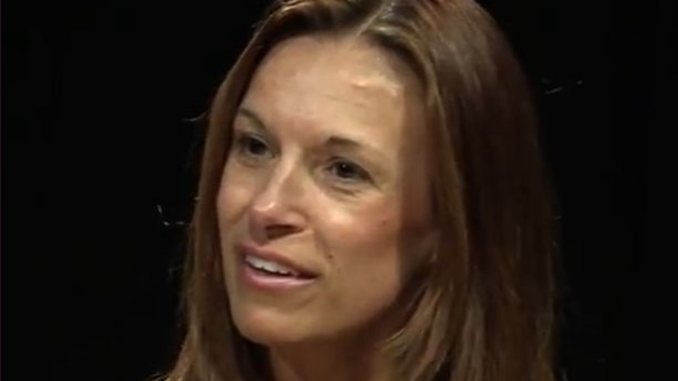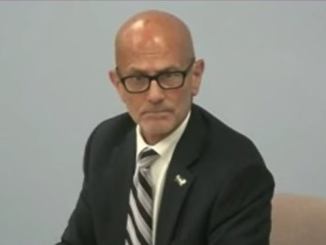
Long-time followers of The Minuteman know that I’ve had issues in the past with our state’s Superintendent of Public Instruction, Kirsten Baesler. Whether it was things like her outright deception regarding the Common Core State Standards and the delayed process of awarding the bid for state testing to an existing Common Core vendor or her poor stance on school safety, the head of North Dakota’s Department of Public Instruction (DPI) has a record that’s problematic.
Another example to be added to the list of things I find troubling are the development and adoption of North Dakota Learning Standards Birth to Kindergarten 2018 Edition— which are a joint effort of DPI and North Dakota Health & Human Services (HHS). DPI announced the completion of the standards earlier this week in a press release.
With compulsory laws that mandate school attendance for children between the ages of seven and sixteen, is it really necessary that the state spend taxpayer dollars on developing standards that literally extend from birth to kindergarten? The introduction to the standards themselves states:
“The Standards are not designed to be used as a curriculum, assessment, or checklist. They are never to be used to conclude a child has failed in any way or that a child is not ready to transition into kindergarten.” (Emphasis in the original.)
If this is the case, then why bother developing and adopting the standards? Well, again, according to the document itself:
“The Standards provide a common set of expectations for children’s learning and development or what children should know and be able to do from birth to kindergarten across various types of early learning settings, as young children are cared for, nurtured and educated in a variety of settings, including their own homes; family, friend, and neighbor homes; family child care homes; child care centers; and Early Head Start/Head Start, and preschool programs.”
How can it be said on one hand that the standards are “a common set of expectations… from birth to kindergarten”, yet say on the other that they’re not a checklist of sorts? And if these are indeed the expectations, what else can we say about a child who doesn’t meet them, other than the child may not be ready “to transition into kindergarten”— at least in the eyes of DPI and HHS? It seems to me that they’re talking out of both sides of their mouths.
Further illustration of this is again found within the introduction of the document itself:
“Programs use the Standards to inform choices in curriculum and learning materials, to plan daily activities, and to inform intentional teaching practices. Aligning instruction and opportunities for play, exploration, discovery, and problem-solving with the early learning outcomes described in the Standards will promote successful learning in all children.”
While standards aren’t curriculum themselves, they certainly drive curriculum. So, pretending otherwise is a bit disingenuous. And the fact that DPI admits themselves that “Programs use the Standards to “plan daily activities” seems an awful lot like a checklist to me.
Now, to be fair, one of the “Guiding Principles” listed in the introduction to the standards is, “Families are children’s first and most important caregivers, teachers, and advocates.” The standards are also referred to as “a guide” and “a resource”. Yet, they’re also “intended to be a living document”.
To be clear, my problem is more with the fact that DPI sees itself as having some sort of role in the development of our children — from birth on — than it is with the standards themselves. It just seems completely unnecessary that they come from DPI. Furthermore, what have they provided that a parent or alternative caregiver either doesn’t know already or couldn’t have accessed through a pediatrician— or even a simple Google search for that matter?
For example, look at this standard for a child from “Birth — 9 Months”:
“Engages with familiar adults for calming and comfort, to focus attention, and to share joy.”
This isn’t exactly earth-shaking stuff we’re talking about here. Do we really need DPI and HHS to be the ones we turn to for this kind of information? I don’t think so.
During an interview in August of 2017, Superintendent Baesler was asked about things in which the state has “grappled with” in education. She then made the following statement:
“There’s also the barrier that I don’t think we’re unique in experiencing of just culture. What is the appropriate role for a public school system to play in the development of a child? And where does the family’s role end and the public school system’s role begin?” (Emphasis Added)
In that same month, I wrote how troubling that statement is, because the family’s role should never end in the education of a child— even if it is public education. When I now consider that DPI somehow feels it has a role in the life of a child to the point of adopting learning standards beginning at birth, I can’t help but wonder where we’re headed when it comes to the role of the state in the education of our children.
Not only do I believe developing and adopting these standards were unnecessary, but is it really that far-fetched to believe that maybe — just maybe — we’re heading down a road that leads to further government intrusion when it comes to parents and their children’s education? Is it unreasonable to believe that such standards could one day become the impetus for things like lowering the compulsory age for kindergarten or even requiring that preschool be mandatory as well? Just where are we headed with all of this?
In my opinion, this was a waste of time and taxpayer resources. It’s another example of the state — and in this case, DPI and HHS — meddling in something that they need not be. The people of North Dakota should demand that these public entities have less of a role in lives of our children and families, not more.
Sources:
- https://theminutemanblog.com/2017/04/12/the-great-deceiver-the-not-so-new-state-education-standards/
- https://theminutemanblog.com/2017/10/04/exposed-dpi-awards-bid-for-testing-to-existing-common-core-vendor/
- https://theminutemanblog.com/2018/03/06/baesler-education-leaders-missing-key-point-school-safety/
- https://www.nd.gov/dpi/uploads/1540/EarlyLearningStandards.pdf
- https://www.nd.gov/dpi/SchoolStaff/ICR/press_releases/NorthDakotaEarlyChildhoodCareandEducationCollaboratetoCreateNewEarlyLearningStandards/
- https://www.legis.nd.gov/cencode/t15-1c20.pdf
- https://www.youtube.com/watch?v=8QfalpVJXOs
- https://theminutemanblog.com/2017/08/23/dpi-superintendent-questions-where-family-role-ends-in-education/





